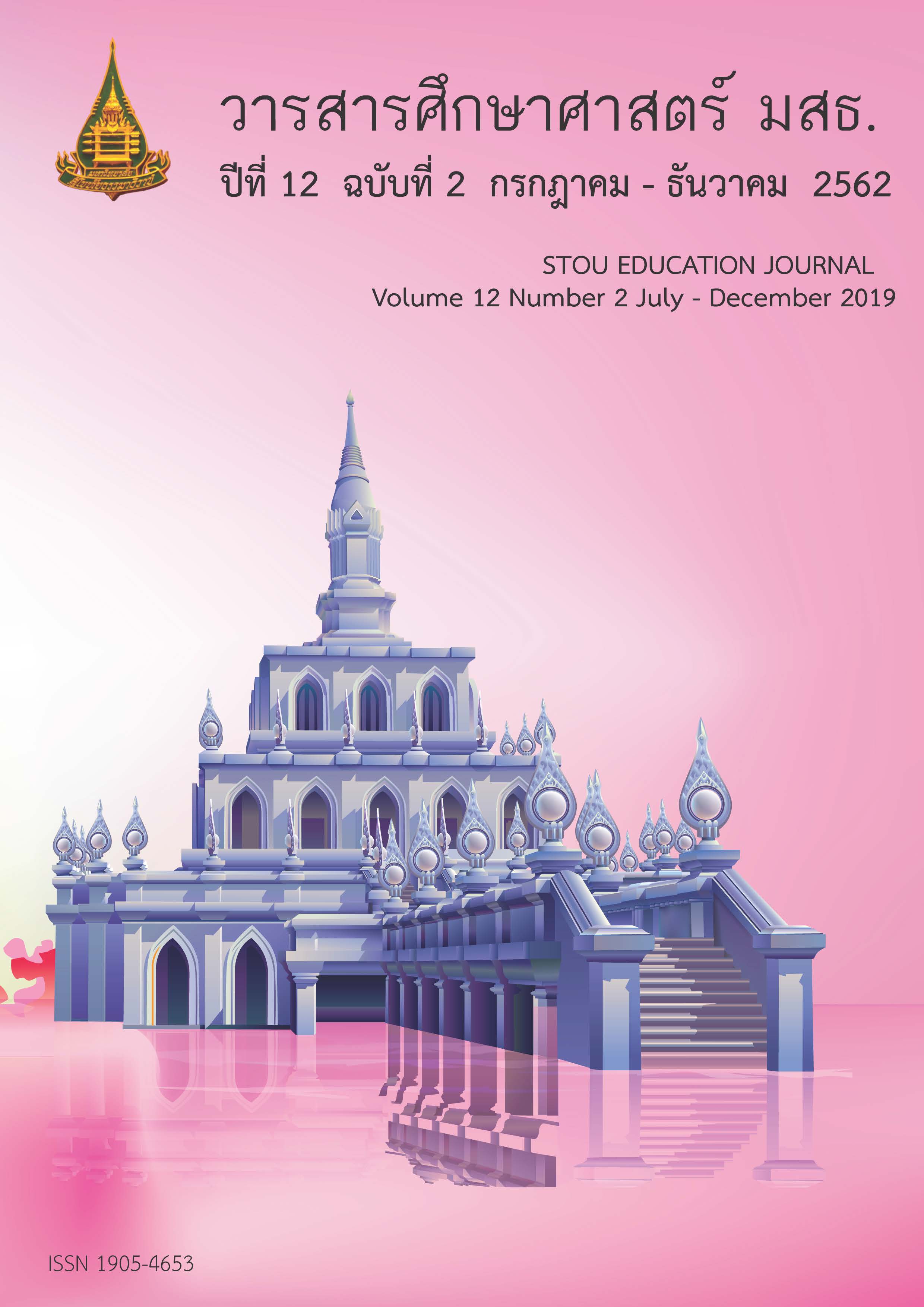The Effects of Using a Guidance Activities Package Based on Torrance’s Creative Theory on Creative Thinking in Freelance Occupations of Mathayom Suksa III Students at Ban Kakorayong School in Surin Province
Main Article Content
Abstract
The purposes of this research were to (1) compare the levels of creative thinking in freelance occupations of the experimental group students before and after using a guidance activities package based on Torrance’s Creative Theory; and (2) compare the levels of creative thinking in freelance occupations of the experimental group students after the experiment and during the follow-up period. The sample consisted of 30 Mathayom Suksa III students of Ban Kakorayong school in Surin Province, obtained by simple random sampling. The employed research instrument comprised a guidance activities package based on Torrance’s Creative Theory consisting of 12 activities, and an assessment scale for creative thinking in freelance occupations, with reliability coefficient of .91. The statistics used for data analysis were the mean, standard deviation, and t-test. The research findings revealed that (1) after using the guidance activities package, students in the experimental group increased their level of creative thinking in freelance occupations at the .05 level of statistical signifcance; and (2) no significant different was found between the experimental group students’ level of creative thinking in freelance occupations at the end of experiment and their counterpart level during the follow-up period.
Article Details
References
ชุติมา วงษ์พระลับ. (2553). ความคิดสร้างสรรค์ที่สรรค์สร้างได้. วารสารศึกษาศาสตร์ มหาวิทยาลัยขอนแก่น, 33(4), 10-21.
ปริญญ์ ทนันชัยบุตร, สุลัดดา ลอยฟ้า, และสันติ วิจักขณาลัญฉ์. (2552). การพัฒนารูปแบบการจัดการเรียนรู้ทัศนศิลป์เพื่อพัฒนาความคิดสร้างสรรค์. วารสารศึกษาศาสตร์ มหาวิทยาลัยขอนแก่น, 32(4), 81-91.
ปรัชญา อัศวเดชกำจร.(2555). SMEs ตอบโจทย์เศรษฐกิจไทย. สืบค้นจาก https://www.bot.or.th/Thai/ResearchAndPublications/DocLib_/article28_06_12.pdf
วีณา ประชากูล.(2549). การวัดความคิดอย่างสร้างสรรค์. วารสารวิชาการ, 9(2), 14-21.
สุกัญญา ตันธนวัฒน์.(2553) เศรษฐศาสตร์ทั่วไป. สืบค้นจาก http://e-book.ram.edu/
สุภาวดี ตั้งบุบผา. (2533). การสร้างแบบทดสอบวัดความสามารถในการคิดสร้างสรรค์ทางคณิตศาสตร์ของนักเรียนชั้นมัธยมศึกษาปีที่ 3 กรุงเทพมหานคร. (ปริญญานิพนธ์การศึกษามหาบัณฑิต ไม่ได้ตีพิมพ์). มหาวิทยาลัยศรีนครินทร์วิโรฒ, กรุงเทพมหานคร.
สุเมธ มโหสถ. (2557). ข้อมูลแรงงานที่มีทักษะพิเศษ พ.ศ. 2557. กองวิจัยตลาดแรงงาน กรมการจัดหางาน กระทรวงแรงงาน. สืบค้นจาก https://www.doe.go.th/prd/assets/upload/files/lmia_th/5c6f5a21050ddb2bd1dc63128d022b13.pdf
Torrance, E.P. (1962). Guiding creative talent. Englewood Cliffs, NJ: Prentice-Hall.
Torrance, E.P. (1969). Rewarding creative behavior : Experiment in classroom creativity. Englewood Cliffs, NJ: Prentice-Hall.


